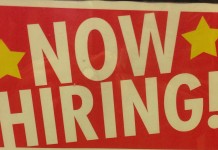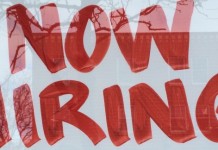Roberta Matuson wrote a terrific article for Forbes.com called “The Bottom Line on Why You Can’t Fill Jobs” that critiques employers’ hiring practices. She contrasts complaints from employers…
- We can’t find talent.
- We can’t keep talent.
- We can’t keep talent engaged
…with complaints from job-seekers:
- I can’t get past the Applicant Tracking Systems.
- I apply for jobs and never hear back.
- I’m perfectly qualified. I suspect my age is the problem.
See the disconnect? Job openings have hit record highs, but hiring has actually slowed. That means it’s time for employers to radically re-think hiring practices that have probably been in place since the depths of the Great Recession.
Here’s my take on Matuson’s list of key problems:
“You don’t know where you are going.”
Every year, I run my classes of MBA students through a cover-letter exercise using real, recent postings for internships. Many of the job descriptions are so vague, so filled with boilerplate that crafting an effective cover letter is impossible. How do you write a cover letter that’s specific to the position when the job description is fill-in-the-blank?
“You’re too tentative.”
The first time I bought a house, all the paperwork fit into a pencil case. Now, I get an inch-thick bound volume. Each and every form represents a litigation–including the form you sign to indicate that you read and signed the previous form. I can only imagine that the HR world is even worse. You need to avoid over-promising, or even the appearance of promising, “permanent” employment or advancement or salary increases. But that doesn’t mean your hiring practices can’t show enthusiasm for the person, and the potential.
When I interview with a company I love, I tell them I’m glad for the opportunity whether I get the job or not. Surely the company can do the same.
You’re focusing on the wrong things.
Matuson hypothesizes, “you want your applicant tracking system to completely integrate with your Human Resource Information System and you are investing heavily to make this so.” And, again, that was probably a great for hiring practices back when the challenge was to keep up with the volume of applicants for scarce positions. Different times, different measures.
Your applicant experience is dreadful.
Start with a one-size-fits-all automated application form. Add a screening interview with an HR person who doesn’t really understand what the position requirements are. Stretch the whole thing out over a period of weeks. And don’t be in any rush to send out the “thanks but no thanks” to the applicants you turn down.
The upside, as Matuson says: “Many are relieved when they never hear back from the employer.”
Your hiring managers don’t know how to hire.
I’ve written a few times about Tap|QA, a tech company that has managed to grow largely through unconventional screening and hiring processes. “Look for a musician with bar-tending experience” sounds strange, but it works.They have managed to bring in people with diverse backgrounds–nursing, art history–and turn them into effective Quality Assurance analysts.
On the other side of the spectrum, Jim Carr provides rich, accurate, careful assessments not only of the standard Myers/Briggs personality types but also of motivations and work styles. He notes that managers often look for the candidate who is, well, manageable: High on stability and compliance, valuing utility. That isn’t the path to innovation.
Stop eliminating candidates based on salary.
As Chris Farrell has noted, Baby Boomers working past traditional retirement age may be the answer to employers’ prayers. In Farrell’s words, these workers are looking for “purpose and a paycheck”–usually in that order. Offering flexibility, respect and challenging work can get employers more than they pay for, if they are willing to look for it.










